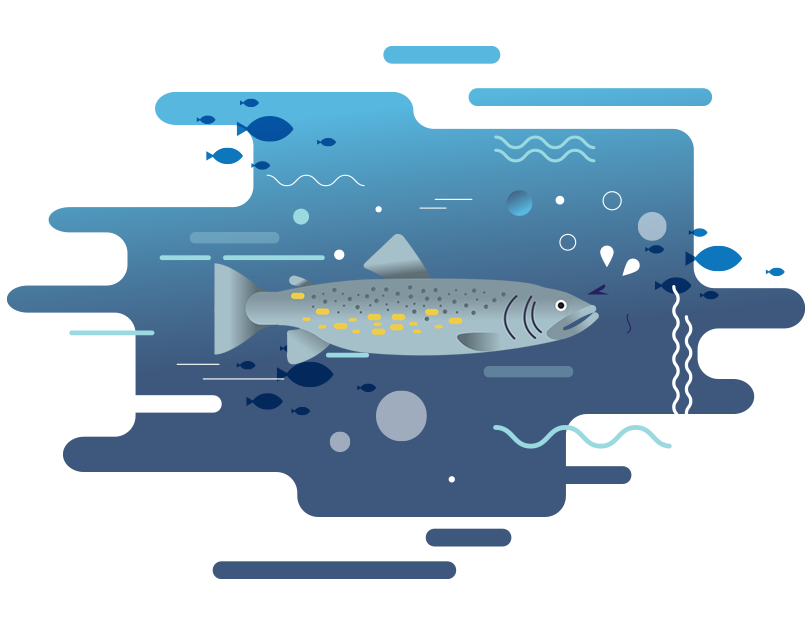
The sea trout belongs to the salmonidae family of fish. Like salmon, it is an anadromous fish, i.e. bi-environmental, migrating to spawning from salty to fresh waters.
Interestingly, in the past, sea trout were not distinguished as a species. Due to the great similarity, it was treated as a salmon. Only in 1780 the Polish naturalist and Catholic priest Jan Krzysztof Kluk described it and called it "salmon trout". The name "sea trout" used today was proposed in 1864 by Antoni Walecki, considered the father of Polish ichthyology.
The body of the sea trout is more massive than that of salmon, the head is larger, the tail shaft is shorter, wider, more flattened. Caudal fin almost straight, without indentation. Head, sides and back are covered with numerous black spots, which have a yellow outline during spawning. The back is grayish or brownish, the sides are lighter, and the belly is silvery. During the spawning season red spots appear on the sides of males and they turn a characteristic copper-brown color. Juveniles have dark, transverse striations and red spots on the body.
Trout are born in the cold, well-oxygenated, clear water in the upper sections of rivers. Fertilized egg grains reside in a mound-shaped nest. The young hatch after 3-4 months. The hatchlings first turn into fry, so called parr, and then into a silver form called smolt. In Poland, sea trout usually start their journey to the sea in the second year of life. A dozen-or-so centimetre long smolts, entering the Baltic Sea, reach their feeding grounds. They look for shoals of herring and sprat, which they feed on. In the sea, the growth of sea trout is accelerated. They reach a weight of up to 12 kg and length of up to 100 centimeters. Very interesting and characteristic is the phenomenon of so-called "homing". Trout return for spawning to their mother river, where they were born. A perfectly developed olfactory memory allows them to find their way.
The meat of sea trout resembles that of salmon and regular trout. It is fatty, juicy and delicate in flavor, has a pale pink color and few bones. It is perfect for roasting and steaming, as well as smoking and serving raw. In Polish sushi restaurants, sea trout is usually served as an ingredient of nigiri, but it also works well as tartare or carpaccio. A raw sea trout fillet may also be served, for example, after it has been seasoned in brine with a mixture of herbs, sugar and brandy. Many gourmets appreciate smoked sea trout. A real rarity, which can sometimes be found in seaside, backyard smokehouses, are cold-smoked sea trout flaps.
The meat of sea trout has much less fat than salmon, and therefore has less calories, 100 g being just over 110 kcal. At the same time it is an excellent source of omega-3 fatty acids (about 1.3%) and contains about 20% of easily digestible complete protein. It is rich in potassium, sodium, phosphorus and magnesium. We can also find in it a significant amount of selenium. In 100 g there is as much as 80% of the daily human requirement for this element.